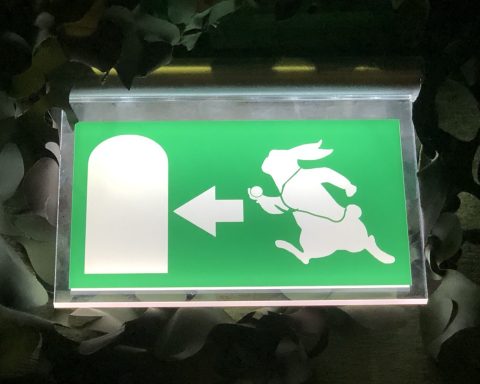
Robert “Rabbie” Burns (1759-96) born in Alloway in Ayrshire, was a Scottish poet renowned for his satiric poetry and letters to acquaintances. Every year, on the 25th of January, Scots across the world vivaciously celebrate his life and poetry with traditional Burns Supper celebrations. In a number of poems, Burns alludes to an understanding of the intricacies of the human body and medical practice of his time. I discuss two examples of medicine in Burns’ poetry, with a particular focus on basic diagnostic testing.
Epistle to John Goldie, 1785
John Goldie (1717-1809) was a Scottish philosopher, wine merchant and friend of Burns. Burns’ 1785 poem was written for Goldie in acknowledgement and appreciation of the religious views expressed in Goldie’s Essays on Important Subject, Moral and Divine (1985), or “Goudie’s Bible”. In the second stanza, Burns references the inspection of urine in medical practice.
“Poor gapin, glowerin Superstition!
Wae’s me, she’s in a sad condition!
Fye!, bring Black Jock, her state physician,
To see her water! Alas!
There’s ground for great suspicion
She’ll ne’er get better.”1
Burns is mocking Reverend John Russell, the character behind “Black Jock,” who was a supporter of the Auld Licht religious teachings of which Burns and Goldie opposed. In the fourth line, Burns describes Black Jock as the doctor or “state physician” examining the urine, “her water,” of superstition. Indeed, before the 1800s, urinalysis consisted of visual inspection or “uroscopy”, smelling and tasting.2 Before the introduction chemical tests in the 1800s, doctors would hold urine up to light to assess urine colour, sediment, odour and consistency. Paintings commonly depicted physicians raising uroscopy flasks, “matulas” containing urine, a symbol of Middle Ages medicine.3 Medical literature contained “urine wheels” with in-depth descriptions of urine appearance and associated diseases, an exemplar from Ulrich Pinder, a German physician, shown below.
Figure: Urine wheel from Pinder’s 1506 book “Epiphaniae medicorum”.4 At the centre, a physician is depicted examining a matula filled with his patient’s urine. Around the outside, matulas containing different coloured urine and descriptors are shown, and were used by doctors to guide diagnoses.
In addition to uroscopy, urine was commonly tasted by “water tasters”. In 1675, Thomas Willis added the term mellitus to diabetes.5 Mellitus originally derives from mel meaning “honey” and sweet tasting urine was diagnostic of diabetes. Although Burns does not specifically mention urine tasting in his work, he demonstrates a basic understanding of simple aspects of historical medical practice by referencing uroscopy. Urine appearance remains relevant in practice to this day, despite the availability chemical testing, and we routinely assess for frank haematuria, sediment, cloudiness and malodour.
Death and Dr Hornbrook, 1785
This poem, also from 1785, tells the tale of an intoxicated narrator finding himself face-to-face with Death whilst returning home from an evening at a public house. Death expresses his frustration that the local doctor, Dr Hornbrook, is denying Death of his rightful victims by curing them of disease. Dr Hornbrook was inspired by John Wilson, a schoolmaster, who complemented his income by selling medicines and advice on common conditions. Amateur medical practice was common in Scotland in the Middle Ages and Burns touches on the danger of unregulated practice in this poem; Death later in the poem claims Dr Hornbrook kills as many people as he cures.6 In stanza 19, Burns alludes to diagnosis by visual inspection of a stool sample, delivered to the doctor by post.
“Ev’n them he canna get attended,
Altho’ their face he ne’er had kend it,
Just shit in a kail-blade and send it
As soon’s he smells ‘t,
Baith their disease, and what will mend it,
At once he tells ‘t.”
Burns is describing a scenario whereby Dr Hornbrook does not meet or know his patient, and so has asked the patient to send a stool sample for inspection. This is a criticism of “postal medicine” which was commonplace in the 18th century.7 Again, Burns is alluding to the practice of examining bodily secretions, a concept that dates back to Hippocrates who was well known to examine patients’ ear wax, urine, stool, blood, vomit and pus.8 We can draw interesting comparisons between the postal medicine in stanza 19 and the current bowel cancer screening programme in the UK. The faecal-immunohistochemistry test (FIT) is sent to everyone in the UK between the ages of 60 and 74 every two years. Participants are asked to place a stool sample in a tube and post the sample to the laboratory, where it is tested for traces of blood.9 Although we cannot claim that Burns predicted the value of this public health intervention, this stanza bears interesting likeness.
Burns alludes to common simple diagnostic tests used in the eighteenth century that emulate practice today.
In two examples of poetry, Burns alludes to common simple diagnostic tests used in the eighteenth century that emulate practice today. While often overshadowed by new and pivotal innovations in medical diagnostics, the basic principles of disease and simple tests remain incredibly relevant and core to medical practice. Perhaps his medical knowledge stems from the then high prevalence of preventable diseases, and Burns himself, aged only 37, eventually succumbed to rheumatic heart disease.10 Burns’ understanding of the medical world extends beyond diagnostics, and reference and mention of abortion, post-mortem examination and profiteering are woven throughout his work.
References
1. BBC. (n.d.). BBC – Robert Burns – Epistle To John Goldie, In Kilmarnock. Available at: https://www.bbc.co.uk/arts/robertburns/works/epistle_to_john_goldie_in_kilmarnock/ [Accessed 7 Jun. 2020].
2. Eknoyan, G. (2007). Looking at the Urine: The Renaissance of an Unbroken Tradition. American Journal of Kidney Diseases, 49(6), pp.865–872. Available at: https://www.ajkd.org/article/S0272-6386(07)00697-X/fulltext
3. Gipson, F. (2018). A wee look at paintings of urine | Art UK. artuk.org. Available at: https://artuk.org/discover/stories/a-wee-look-at-paintings-of-urine [Accessed 7 Jun. 2020].
4. Wellcome Collection. (n.d.). Epiphaniae medicorum, uroscopy and ring of flasks. Attribution 4.0 International (CC BY 4.0) Available at: https://wellcomecollection.org/works/rcq5tvhq?query=uroscopy [Accessed 7 Jun. 2020].
5. Am, A. (2002). History of Diabetes Mellitus. Saudi medical journal. Available at: https://pubmed.ncbi.nlm.nih.gov/11953758/
6. www.robertburns.plus.com. (n.d.). Robert Burns, Analysis of Death and Dr Hornbook. Available at: http://www.robertburns.plus.com/hornbook.htm [Accessed 7 Jun. 2020].
7. Wild W. Medicine-by-post: the changing voice of illness in eighteenth-century British consultation letters and literature. Amsterdam: Rodopi, 2006.
8. Warker-Pope, T. (2008). What Would Hippocrates Do? Available at: https://well.blogs.nytimes.com/2008/09/23/what-would-hippocrates-do/#:~:text=By%20today [Accessed 7 Jun. 2020].
9. NHS Choices (2020). Home test – Bowel cancer screening. Available at: https://www.nhs.uk/conditions/bowel-cancer-screening/home-test/ [Accessed 7 Jun. 2020].
10. Buchanan WW, Kean WF. Robert Burns’s illness revisited. Scott Med J. 1982;27(1):75‐88. doi:10.1177/003693308202700118
Featured photo by Jonathan Francisca on Unsplash








